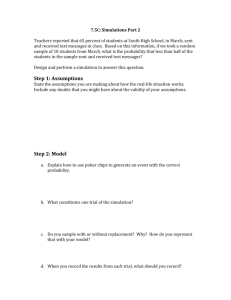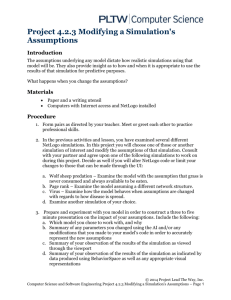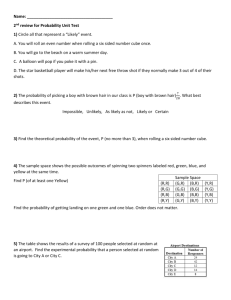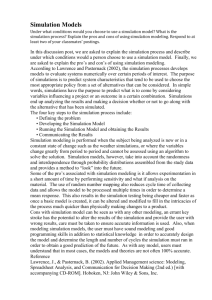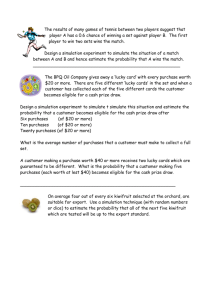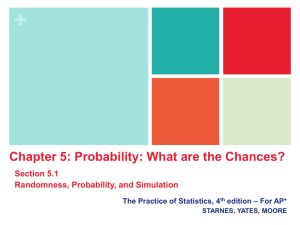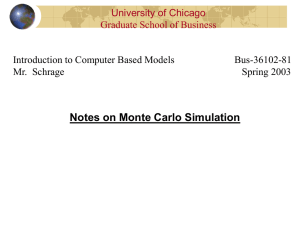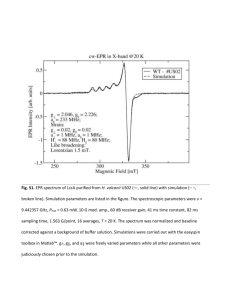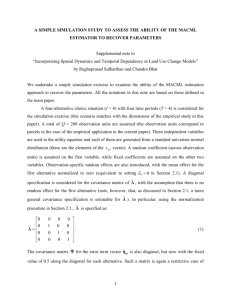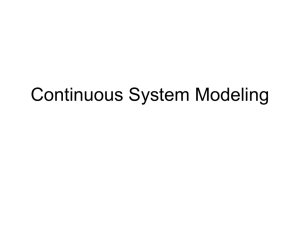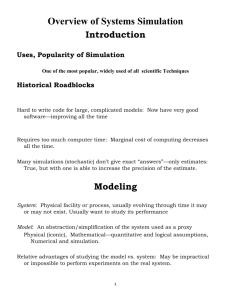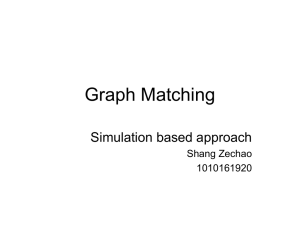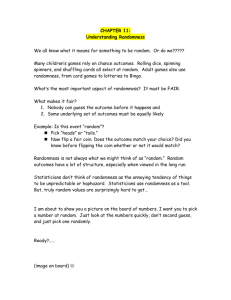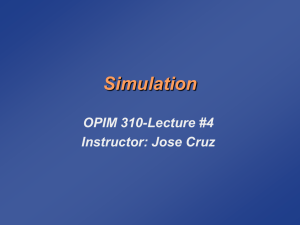Chapter XI
advertisement
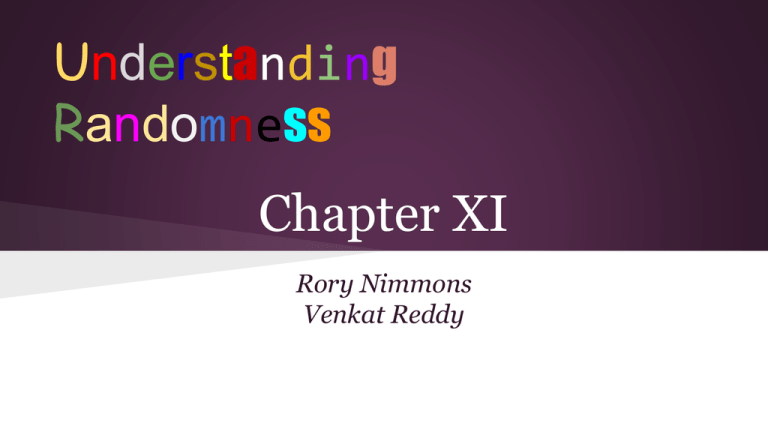
Understanding Randomness Chapter XI Rory Nimmons Venkat Reddy Main Concepts Simulations are used for: Can help to investigate a query for which there are many potential results, whilst not intending to collect data, and the math is like super difficult to do. Main Concepts cont. ❏ Base simulation on random values that are to be generated by a randomizing device or Internet ❏ Simulation model’s can provide useful insight on the real world Terms Random: An event is random if we know what outcomes could happen, but not which particular values will happen. Random Numbers: Random numbers are hard to generate. Nevertheless, several Internet sites offer an unlimited supply of equally likely random values. Terms Simulation: A simulation models random events by using random numbers to specify event outcomes with relative frequencies that correspond to the true real-world relative frequencies we are trying to model. Simulation Component: The most basic result of a component of a simulation is its outcome. Terms Outcome: An individual result of a component of a simulation is its outcome Trial: The sequence of several components representing events that we are pretending will take place. Response Variable: Values of the response variable record the results of each trial with respect to what we were interested in. Formula’s For generating randomness❏ Internet Programs ❏ Calculator ❏ Textbook Setting up a Simulation Questions to ask yourself- What is the component to be repeated? How will you model the outcome? How will you simulate the trial? What is the response variable ? How will you analyze the response variable? Homework Question #5 Explain why each of the following simulations fails to model the real situation properly. A. Use a random integer from 0 through 9 to represent the number of heads that appear when 9 coins are tossed Answer: The outcomes are not equally likely; for example tossing 5 heads does not have the same probability as tossing 0 or 9 heads, but the simulation assumes they are likely equal B. A basketball player takes a foul shot. Look at a random digit, using an odd digit to represent a good shot and an even shot to represent a miss. Answer: The even-odd assignment assumes that the players have an equally likely chance of making or missing a shot, but in reality the likelihood of making the shot depends on the player’s skill so #5 continued C. Use five random digits from 1 through 13 to represent the denominators of the cards in a poker hand. Answer: Suppose a hand had 4 aces. This might be represented by 1,1,1,1, and any other number. The likelihood for getting the first ace is different that for getting for example the second or third, but with this question the likelihood is the same. Hw Q #15 Many states run lotteries to raise money. A Web site advertises that it know “how to increase YOUR chances of Winning the Lottery.” They offer several systems and criticize others as foolish. One system is called Lucky Numbers. People who play the Lucky Numbers system just pick a “lucky” number to play, but maybe some numbers are luckier than others. Let’s use a simulation to see how well this system works. To make the situation manageable, simulate a simple lottery in which a single digit from 0 to 9 is selected as the winning number. Pick a single value to bet, such as 1, and keep playing it over and over. You’ll want to run at least 100 trials. (If you can program the simulations on a computer or programmable calculator, run several hundred. Or generalize the questions to a lottery that chooses two-or three-digit numbers-for which you’ll need thousands of trials.) #15 A. What proportion of the time do you expect to win? Answer:You should win about 10% of the time A. Would you expect better results if you picked a “luckier” number, such as 77? Answer: No, you should be able to win the same rate with any number



